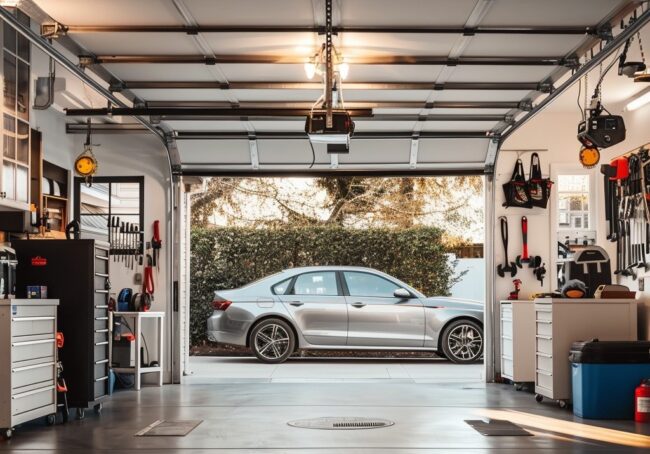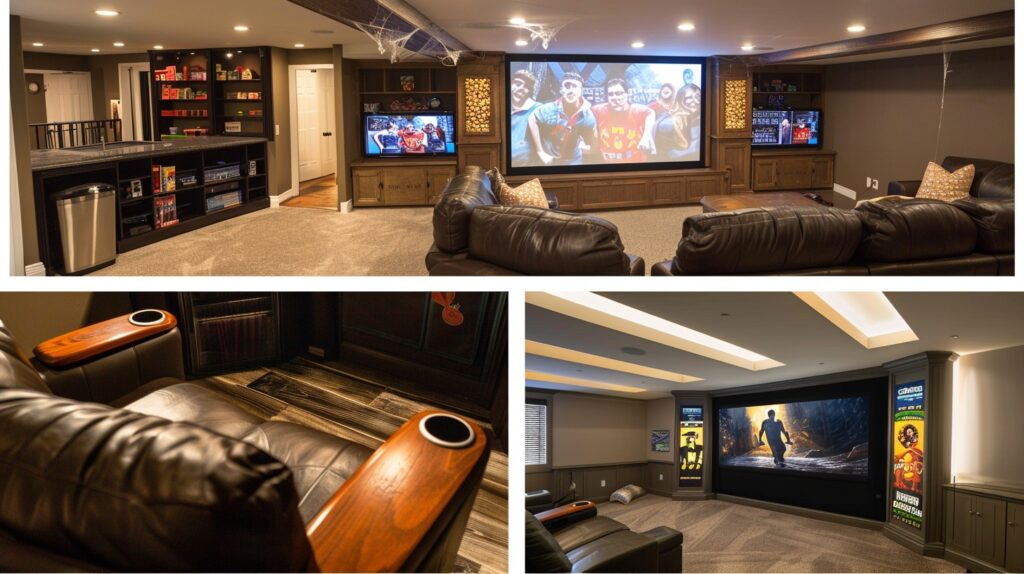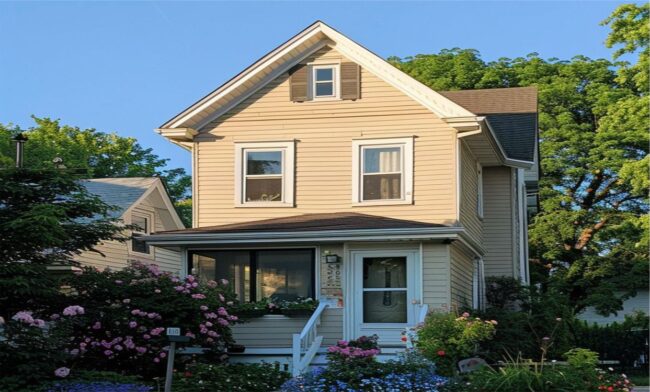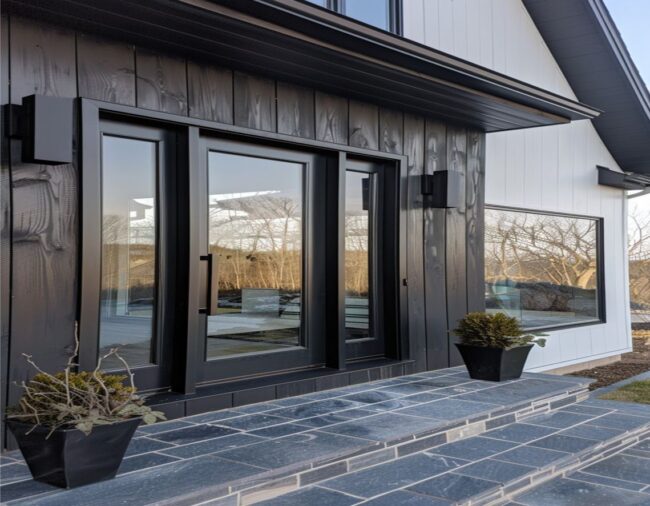Check out the different types of home additions you can go for, like room additions and garage conversions. We’ll walk you through the process of building a home addition in Chicago and break down the costs involved.
Home Additions in Chicago: Ideas, Costs, Tips, Best Methods
If you’re a homeowner in Chicago, you might be considering home additions to level up your living space, make room for the expanding family, and increase your property’s value, all without the stress and expense of moving. This trend in home improvement and expansion shows how more and more people are looking for tailor-made living spaces that match their unique lifestyles and preferences.
1. Increase Living Space
One of the main reasons you might be thinking about expanding your home is to create more living space. Extra rooms will give you the chance to make improvements that increase the functionality and comfort of your house.
When you expand existing rooms or add new ones, you’re opening up possibilities for how you will use that space. Extra rooms mean your home will adapt to your changing needs and lifestyle. Whether you want to set up a cozy reading nook, a home office, or a playroom for the kids, room additions will make your house more versatile and welcoming.
2. Accommodate Growing Family

As your family grows, you start feeling the need for extra custom rooms so everyone has enough space and privacy. Custom rooms bring a personal touch tailored to each family member’s needs, creating a cozy and unified living space.
3. Increase Property Value
Home additions are a strategic investment that will increase the property value of your residential property, making it a more attractive option for future buyers. Improvements will transform your house aesthetically and functionally, catering to modern needs and preferences.
The added square footage from a new room or an expanded living space will boost the overall appeal of your property. Along with increasing the market value, home improvement projects also create a more inviting and comfortable living environment.
Potential buyers are often willing to pay a premium for homes that have already undergone remodeling, recognizing the worth and savings in time and effort on future renovations.

4. Avoid the Cost of Moving
When you’re thinking about making changes to your home, adding on to what you already have will be a smart move. It’s usually a more wallet-friendly option compared to the hefty expenses that come with moving to a new place, making it a pretty practical home project for a lot of homeowners.
When you invest in expanding or renovating your current home, you’re investing in your future. Plus, with all the customization options available with home construction, you get to create a living space that fits your style and needs perfectly.
What Are the Different Types of Home Additions?
Various types of home additions come with different levels of difficulty and scale, from simple room expansions to more extensive projects like adding a second story or converting a basement. Each type demands a unique set of skills and construction methods from your remodeling company.
1. Room Addition
Adding a new room gives you more space to work with and lets you customize it to fit your lifestyle. Whether you’re dreaming of a new bedroom, a home office, or a cozy entertainment area, that extra room will really up your home’s game in terms of functionality and style.
Before you start a room addition project, check out the local building rules, factor in your budget, and think about how it will affect the rest of your home’s layout. Plan everything out carefully and team up with a reliable contractor to achieve a successful home renovation project.
2. Garage Conversion
Transforming your garage into a functional living space is a cool way to spruce up your home’s interior. When you convert your garage into a living area, you’re making the most of space that was just sitting around collecting dust. You will turn it into a guest suite, an office, a home gym, or even a sweet entertainment spot.

When you’re planning this transformation, think about things like making sure the space is well-insulated, ventilated, and has plenty of natural light. Design elements are key to creating a cozy and welcoming living area. Don’t forget about zoning laws, permits, and budgeting. Addressing challenges early on will help smooth out the process.
3. Second Story Addition
When you add a second story to your home, get ready for some major structural changes. It’s a great option for expanding your living space.
The renovation will totally level up your home, giving you more room to stretch out without having to take up more yard space. Going up a level opens up all sorts of new possibilities for extra bedrooms, a home office, or a cool hangout spot.
4. Sunroom Addition
Adding a sunroom to your home creates a seamless blend between indoor and outdoor living, giving you a relaxing space that improves your home’s design and functionality.
Versatile home extensions not only let you enjoy the beauty of nature from the comfort of your home but also bring in natural sunlight, creating a bright and airy atmosphere. With design ideas like floor-to-ceiling windows, skylights, and cozy seating areas, a sunroom offers you a tranquil retreat for relaxation or entertaining guests.
If you expand your living space with a sunroom, you will create a peaceful oasis that improves your overall lifestyle.
5. Basement Conversion
Converting your basement into a livable area is a popular home renovation project that gives you a lot more space without changing the size of your home.

When you finish your basement, you’re basically turning that lower level into different functional and cozy spaces. Think family room, entertainment area, home office, gym, or even a guest suite. With good materials and cool design ideas, your basement will become whatever you want it to be. Add in some great insulation, lighting, flooring, and paint, and that once dark and dreary basement will become a bright and inviting part of your home.
Steps to Building a Home Addition in Chicago
When you’re building a home addition in Chicago, you need to follow a carefully laid-out plan:
- talk to contractors,
- get all the required building permits,
- keep a close eye on the project,
- be sure everything meets the local building codes and regulations.

1. Consult with a Contractor
When you’re gearing up for a home addition project, your first move should be to chat with some local contractors who know the ins and outs of similar projects like yours.
Pick the right contractor so your project gets done just right, on schedule, and without breaking the bank. Licensing is a big deal since it shows that the contractor has all the right skills and meets the standards set by the bigwigs in charge.
Experience is key for tackling any hurdles that might pop up during your home addition journey, leading to a smoother ride. Check out a contractor’s rep and find out all you will about their work ethic and dependability; research and gather feedback from past clients before sealing the deal.
2. Obtain Necessary Permits
First things first, you’ll have to submit detailed plans of your construction to the local building department for the green light. Handle architectural drawings, engineering plans, and a site survey. Then, the application gets a thorough review, confirming everything lines up with the construction regulations in place.
Throughout the construction process, you might have to pass inspections at different stages to confirm that you’re sticking to the approved plans and building codes.
3. Create Design Plans
When you’re adding a new structure to your home, work with an expert to create detailed schematic plans. Architectural plans are like your construction bible, giving builders a clear roadmap on how to turn your vision into reality. They lay out everything from dimensions to materials to architectural details, guaranteeing every little aspect is carefully thought out.

Interior design plans focus on making your space not only look good but also work well. They cover things like layout, lighting, and color schemes. Stick to architectural plans closely to reduce mistakes and create a space that perfectly blends style and function.
4. Prepare for Construction
When preparing for construction, you need to start by selecting the right building materials, putting together a construction timeline, and making sure all the preliminary tasks are checked off. Choose the best materials – compare different options based on things like durability, cost, and how well they fit your project’s needs.
Once you’ve got your materials sorted, it’s time to create a detailed construction timeline. Schedules break down the project into stages, set deadlines, and mark important milestones.
Stay in sync with suppliers, contractors, and everyone else involved. Coordinate with all stakeholders to keep your workflow running like a well-oiled machine.
5. Complete Construction
When the construction phase is finished the final inspections are necessary to confirm all work meets quality standards. Following the final inspections to confirm that all aspects of the construction adhere to regulations and standards, the project officially moves towards completion.
The remodeling company should obtain the client’s feedback to gauge their satisfaction with the result. Feedback will tell you how successful you were and help in identifying areas for improvement. Prioritize satisfaction throughout the construction process for a positive experience, long-term relationships and stellar review on your Google Business Profile.
What Are the Costs of Home Additions in Chicago?

When considering home additions in Chicago, you’ll find that costs will differ a lot based on things like how big the project is, the quality of materials, and labor expenses. Based on our experience, the prices are between $200 and $650 per square foot. This is not a promise but a cost in over 95% of cases during our 20 years of work.
To keep things in check and your project doesn’t break the bank, set up a solid construction budget. This way, you will manage your expenses well, and everything will stay within your financial limits.
1. Cost of Materials
When you’re planning a home addition, keep in mind that the cost of materials is a big deal. The price tag will vary a lot depending on the quality and type of building materials you go for.
Think carefully about the materials you choose because it’s key to finding that sweet spot between exceptional craftsmanship and sticking to your budget. Going for high-end building materials will make your project look amazing and last longer, but it might hit your wallet harder.
On the flip side, picking more budget-friendly options could save you money upfront but might mean sacrificing the overall quality and durability of your addition. It’s super important for you and your contractor to work together closely. The materials you pick should match your vision for the project and your financial boundaries.
2. Labor Costs
Depending on the project’s complexity and the expertise of the construction crew, prices will vary. Hire skilled labor if you want first-class results.
Factors like project size, location, regulations, and timelines all come into play when it comes to figuring out labor costs. Experienced construction professionals know how to handle variables with ease. Bring in skilled remodelers to lower the chances of mistakes and delays and save time and money in the long haul.
A capable construction crew will also provide valuable advice and suggestions, making the whole construction process smoother and more successful.
Reach out now for free consultations!
3. Permit Fees
Permit fees are necessary, and you can’t avoid them when you’re building. They cover the costs of getting all the permits you need and making sure you’re following the rules in your neck of the woods.
When you’re tackling a construction project, you can’t skip out on building permits. They’re your golden ticket to proving that your work is legit and safe. Permits come with a price tag that will change based on how big and complex your project is.

Zoning regulations are like the rulebook for how you will use and develop your property. They keep things looking nice and in line with the neighborhood’s vibe. If you brush off rules, you could end up with fines, delays, or even a full stop to your construction plans. Builders and developers need to keep costs and rules in mind to avoid any headaches and keep their projects on track.
4. Additional Costs
When you’re planning a home addition, you’ll need to budget for extra expenses like home improvement financing, construction warranties, and unexpected costs.
As you dive into your home addition project, think about how you’re going to finance it. Whether you’re looking at personal loans or home equity lines of credit, understanding your financing options is key to figuring out what works best for your budget.
Getting a construction warranty will give you some peace of mind in case issues pop up down the road. Set aside some cash for any surprise expenses that might crop up during construction – having a contingency fund is always a smart move.



